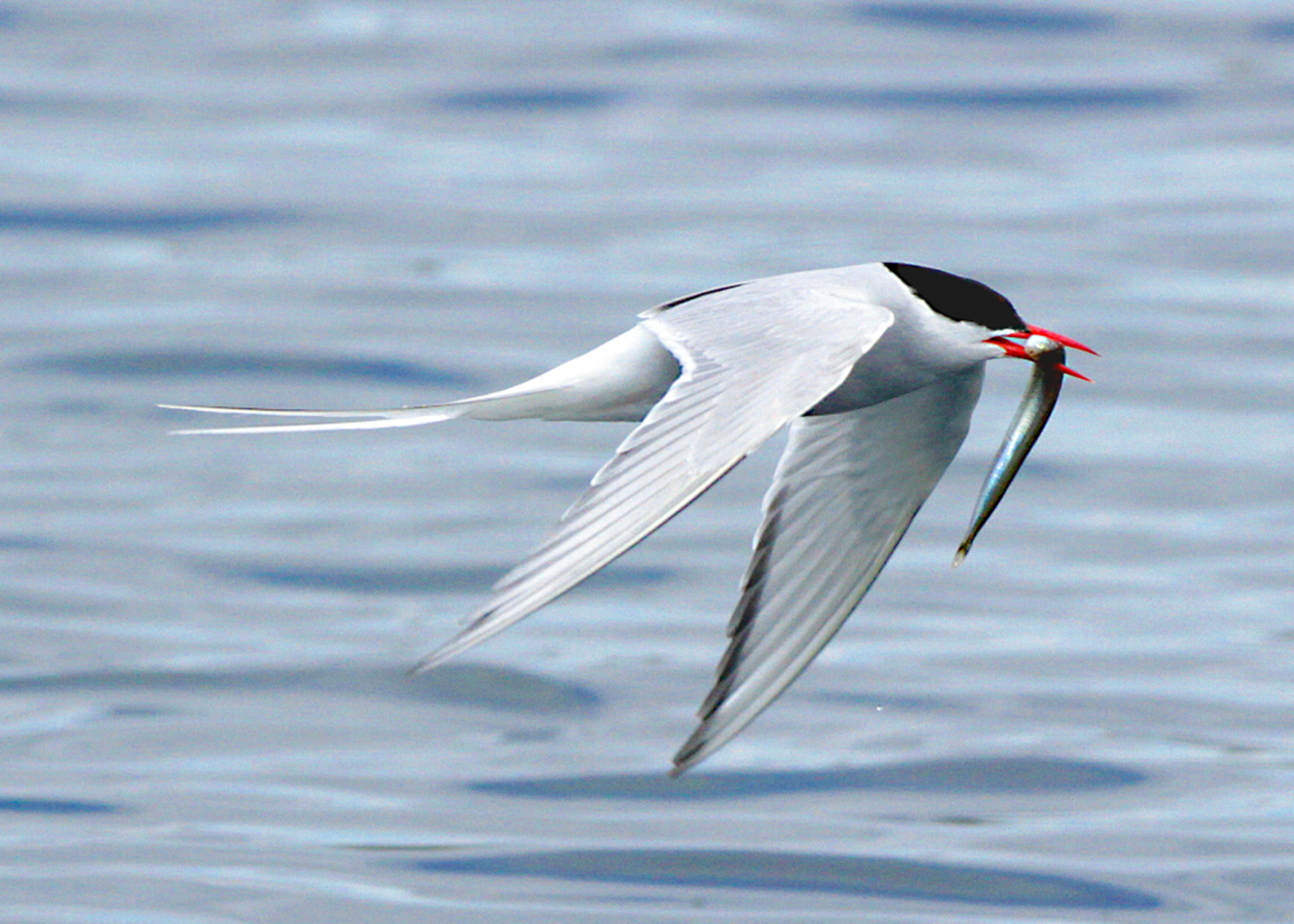

Tower and Town, October 2024 (view the full edition) (view the full edition)Nature Notes"The Paradise Tern" The recent news that five seabirds have been added to the list of 68 endangered U.K. avian species is cause for grave concern, especially as it includes a bird with which I have a special relationship which breeds on northern coastlines, Shetland and the Orkneys-the Arctic Tern. It isn't exactly a characteristic Wiltshire species, but the arrival of a flock of 125 passing through the Cotswold Water Park in late April 2012 marks the date when I began composing an extended choral work for soloists, chorus and orchestra about this remarkable bird. Creating "Atlantic Odyssey" was quite a project for librettist Mike Polack and myself, and left both of us amazed at the courage, skill and stamina of a bird no heavier than an apple that reputedly travels the equivalent of three times to the moon and back during its lifetime. With silver-grey wings, a smart black cap and blood-red bill and legs, its call is a harsh "Kria!" One curious phenomenon is the so-called "Dread"-a period of silence in an otherwise noisy tern colony, prior to the departure of all the birds south, on their long migratory journey. Fiercely defensive of their nests, they can draw blood from the head of a human intruder, as some readers may know from personal experience on the Farne Islands! Arctic terns remain faithful to one partner and can live for up to thirty years despite their perilous travels. They are capable, like Swifts, of sleeping on the wing as they fly, sometimes at great heights, and when returning north in the Spring they can cover a distance of 300 miles a day. Each year they make their extraordinary 40,000-mile Atlantic migration from polar north to polar south, starting in September. Arctic Terns are in a precarious position as their breeding areas are threatened by climate breakdown and the food they eat such as sand eels are overfished and at risk from warming seas. Invasive predators such as rodents decimate their young, and bird flu has caused further population declines. Some human help is offered to some of our tern species, providing rafts or nesting boxes, cordoning off areas on beaches and patrolling areas to deter human and animal access, but there is a limit to what can be done to reverse the downward trend. The Arctic tern has another name-Sterna Paradisaea, the Paradise Tern, referencing its restless circumpolar quest for the realms of perpetual light. Arctic Tern photo by David White whose photos enhanced performances of "Atlantic Odyssey"  Robin Nelson |